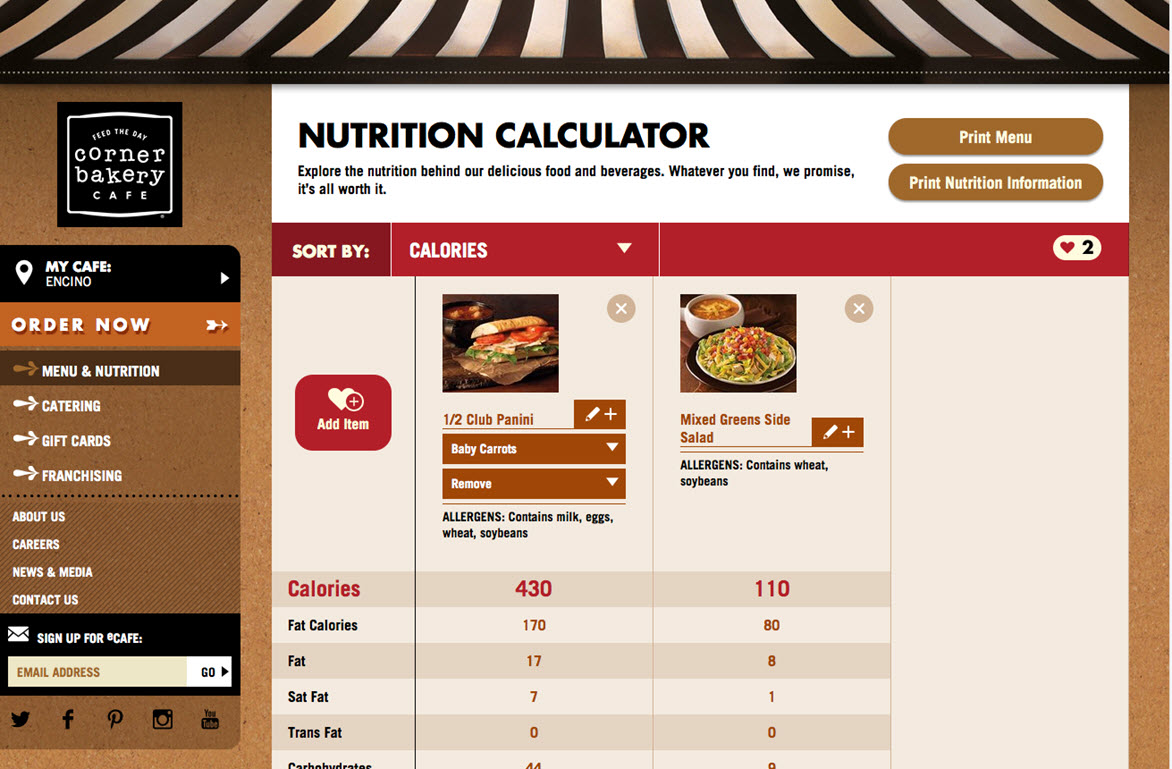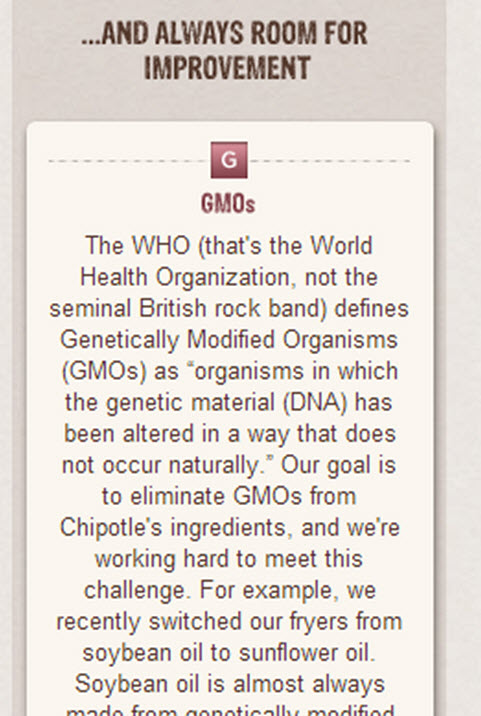Content Marketing: 9 examples of transparent marketing
I don’t normally read press releases.
Frankly, most are just spam that I’m constantly trying to remove my email addresses from. However, one recently written by Amanda Presley of MSR Communications caught my eye.
“February 12th is Abraham Lincoln’s birthday, and what better way to pay homage to ‘Honest Abe’ than by looking at all the ways marketers can be more upfront and transparent with customers?”
She went on to discuss how her client, Kentico, viewed content marketing.
“Transparent content marketing: It’s not enough to just sell anymore. You need to inform. [For example, Kentico customer] Corner Bakery makes it easy to get nutrition figures when ordering online.”
So in the spirit of Honest Abe, let’s take a look at a few examples of transparent marketing that Amanda dug up from around the Web, along with key takeaways I provided for each to help you put these lessons into practice.
Lesson #1. Customer complaints on social media networks = visible business intelligence
Key Takeaway: I feel for Verizon Wireless and other tech companies. Our expectations for always on, always working, always super quick technology must be hard to fulfill. Admittedly, I’m just as impatient and immediately blame the product instead of my own user error.
These complaints, even when unrealistic about technological capabilities, are business intelligence gold. Don’t hide your customer complaints. Do as Verizon Wireless does on its Twitter account – address them very publicly and show how you are using their feedback to improve your product.
We all make mistakes. Most customers are very forgiving if they feel they are being heard and their problems are being considered.
Lesson #2. Help customers help themselves
Customers want to eat healthier.
And take care of the environment.
 |
 |
Key Takeaway: There are no perfect choices in a free market. Life is a series of tradeoffs.
Help your customers make those tradeoffs to the betterment of themselves by showing the positives and negatives of the different products you offer, as Corner Bakery does with its nutrition calculator, Nike does with its Materials Sustainability Index and Patagonia does with The Footprint Chronicles.
“By being transparent with you, we can invite you into the conversation,” Rick Ridgeway, VP for Environmental Initiatives, Patagonia, told Fast Company’s Simon Mainwaring in an interview.
“Hyper-transparency is a must. It’s not something we should be afraid of; it’s something we welcome,” said Jim Hanna, Environmental Impact Director, Starbucks.
Bonus points when you let customers know why they should buy from a competitor instead of you, when it serves them better.
Lesson #3. Employees are customers, too
Marc Benioff, CEO, Salesforce.com, invited all company employees to the company’s annual management off-site meeting – virtually – using Chatter.
“Suddenly, the meeting went from a select group participating to the entire company participating,” Marc said.
Zappos.com embraced employees publicly tweeting about layoffs, even showing them on its TweetWall.
“We’ve generally found it to be beneficial to be public online about everything,” said Tony Hsieh, CEO, Zappos.com. “And we will continue to do our best to be as transparent as possible.”
Key Takeaway: Wikipedia defines a customer as the recipient of a good, service, product or idea. If your marketing is to be successful, you have a lot of ideas you need to share with employees. So transparent marketing goes beyond traditional marketing channels to all business communications – both within and outside your company.
Lesson #4. Expose your industry
Beauty advertising, like marketing for many other industries, has long focused on making people insecure. Dove took the opposite approach, pulled back the veil of advertising hype, and showed women what they really look like.
The result: 61,912,975 views on YouTube and 20 million likes on Facebook.
Key Takeaway: Zig where others zag. Many marketers are looking to break through the clutter and go viral on social media. One way to do that is by being transparent while others in your industry are focused on smoke and mirrors.
Lesson #5. Even better, expose your company
Domino’s launched a national campaign to tell everybody how bad their pizza tastes (before improving it, of course).
“What consumers were looking for was honesty and transparency because nobody was giving it to them at that point,” said Russell Weiner, Chief Marketing Officer, Domino’s Pizza.
The result: After two-and-a-half years of sales declines, same-store sales for Q1 2010 (after Domino’s launched the campaign) increased 14.3% year-over-year.
Last year, the company took transparency in a different direction by showing its work with the Domnio’s Pizza Tracker.
Chipotle doesn’t only talk about the high quality of the ingredients in its food, it also notes where the foods’ ingredients fall short.
Key Takeaway: Many companies take a “Wizard of Oz” approach to marketing. “Pay no attention to the man behind the curtain.” But by pulling back that curtain in two ways …
- Being real about your products’ weaknesses as well as its strengths
- Showing your work and processes
… you win a customer’s trust, understanding and loyalty.
With the rise of push-button publishing and social media, if you’re not transparent, you will eventually be exposed
“With the Internet and social media, it’s easier than ever for customers to talk to each other about the products they’re looking to buy or the brands they already depend on,” said Thom Robbins, Chief Evangelist, Kentico. “They can compare prices, fact check a company’s claims and very publicly call companies out for bad service. That’s why transparency in marketing is so important today. It’s OK to make the occasional mistakes – people generally forgive them as long as there’s open and honest dialogue. The one thing they won’t forgive is dishonesty or the perception that the company is hiding something.”
I’ll give the final word on the subject to Bruno Pieters, Designer, Honest By, who cautioned:
“If a brand is proud about something, they’ll make sure we know about it; if they’re doing something they believe we won’t appreciate, they’ll keep us guessing. But actually, it is their silence that is already the answer we need in order to make a decision. This is where the danger lies for all companies that aren’t transparent. No customer just assumes [brands are doing their] best these days.”
You may also like
Resources on Transparent Marketing: How to earn the trust of a skeptical consumer [More from the blogs]
Transparent Marketing: How to make your product claims credible … not incredible [More from the blogs]
Domino’s earns consumer loyalty with mobile at the forefront [via Mobile Commerce Daily]
Viral Dove Ad Uses Sketch Artist to Illustrate Women’s True Beauty [via TIME]
Amazon Cloud Outage Highlights Need For Transparency [via MSR Communications]
Categories: Marketing business intelligence, content marketing, customer-centric, social media help, Transparent Marketing















In regards to Lesson #2, I love the idea of not just telling customers how your product will help them/help others, but showing them with visuals and breaking everything down right in front of them. Thanks, Daniel!
I believe a good deal of the value in the kind of transparency encouraged in this article is in letting customers or clients know something they didn’t expect to hear/see from you. Our aural and visual senses are at maximum load from marketing messages around the clock – what can give a message a kick is that it surprises, which triggers an emotional response and aids brand awareness and brand perception…rather than wash over customers in the sea of marketing comms.
I love Chipotle’s honesty. It builds immediate trust in their brand.
I love the trend towards transparent marketing – and best of all, the more brands and businesses that adopt it, the less acceptable cloak-and-dagger forms of marketing are. Great post, thanks for sharing!
When a company of any size feels more human in its marketing, I tend to want to do business with them. We don’t want to deal with machines. Show me you are real and you care.